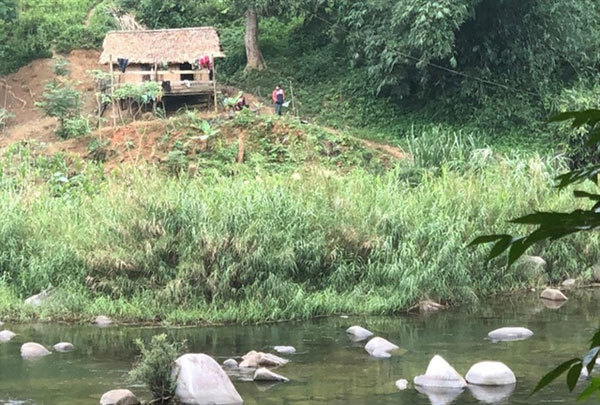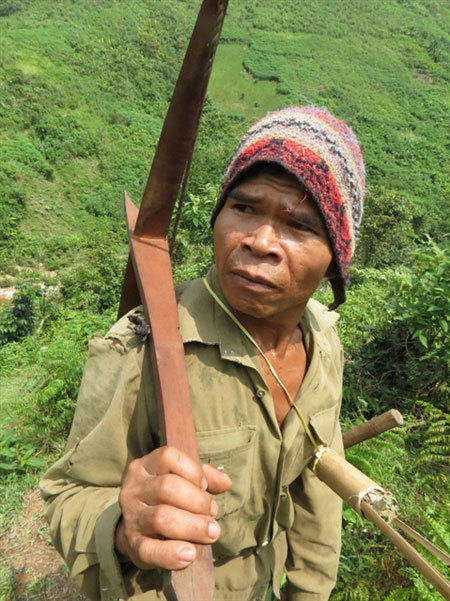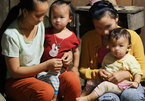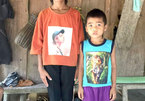The Mày people, a sub-ethnic group in Quang Binh Province, may not have a written tradition, but they do have an old and rich culture, passed down the generations orally.
 |
| From ancient times to the present, the sub-ethnic Mày group has always lived in high mountains and at the heads of rivers. — Photo tienphong.vn |
A correspondent from Tiền Phong (Vanguard) newspaper recently investigated the group after various local media reports said they had fled into a forest in Lom Village, Trong Hoa Commune, Minh Hoa District to hide from the COVID-19 pandemic.
The group is one of several sub-ethnic groups of the Chứt ethnic minority, located in Minh Hoa and Tuyen Hoa districts of Quang Binh.
Running away?
A month ago, media reports surfaced that the Mày people had abandoned their houses to flee to the forest to protect themselves from the coronavirus.
Doan Ngoc Lam, secretary of Minh Hoa District Party Committee, said Mày people believed in the protection of the forest god and the mountain god.
If one understood their culture and habits, their decision to hide in the forest would make sense, he said.
The Mày people trust their god Ku Lôông and if they go to the forest, they will be nearer to their god and be protected, he added.
A worker of Trong Hoa Commune People’s Committee said the Mày people were afraid of ghosts and if a person in the village dies, they cower in fear. So fleeing to the forest was logical when they heard about a deadly disease.
However, Lam added, living in the forest was not good, especially for children, so authorities will try to educate them, on the pandemic and preventive measures.
But Ho Thi Thoi, Party secretary of Trong Hoa Commune, dismissed the reports, saying the local people often stay in the forests for a few days for cultivation work as the weather is favourable for seeding during this time of the year.
 |
| The lives of the Mày people still revolve around hunting and gathering. — Photo tienphong.vn |
Eldest brother’s mission
The Mày group currently numbers 1,500 people, living in the Giăng Màn mountain range.
Though we're deep into the 21st century, the lives of the Mày people mostly revolve around hunting and gathering.
Although their lives are difficult and they have some customs considered backward, they have a rich and unique cultural treasure which has helped them survive and develop in the remote region.
The Mày people believe that the Tôồng Vôốc, Ku Lôông, Y Răng and Y Hơn peaks are illustrious gods in the majestic Giăng Màn mountain range.
But the god they most often mention is Ku Lôông.
The Mày group’s legend said the god Ku Lôông gave birth to an egg and the egg hatched into three people. The eldest was the Mày, the younger brother was the Khua and the youngest was Nguon, both other sub-ethnic groups.
The eldest brother Mày was entrusted with protecting the land, water resources and killing beasts so his younger brothers could live in peace.
Because of this noble mission, from ancient times to present, the sub-ethnic Mày group always lived in high mountains and at the heads of rivers.
Ku Lôông also showed the leader of the Mày people how to make bow and arrows with poison, how to trap animals and how to train wild bees to drive away enemies.
From Ku Lôông’s teachings, the Mày people created weapons and defeated their enemies. They became great warriors of other villages and were privileged to live in majestic mountains. The high mountains became like an impregnable fortress helping the Mày people fight enemies and wild animals.
Sharing water
As well as mountains, the Mày people have a long association with water, and indeed "Mày" in their language means water. They are well aware of the importance of this resource, not only for them but also for other groups living downstream.
Their legends speak of many attempts to poison their water resources but they could not access the water well of god Ku Tec thanks to the Mày people’s bravery.
At the end of the year, the Mày people hold a ceremony to divide rainwater from their roofs or from an upstream stream.
The water is divided by an honourable person. Each household gets about one litre of water, to remind everyone in the group of the importance of water and the need to share natural resources.
The Mày people believe water is from the sky and the mountain. Water is flexible and supple, strong and violent and brings fish, shrimp and good crops. Understanding water and protecting water is a long-time philosophy of the Mày people.
Music
Dinh Thanh Du, a local cultural researcher, said the Mày people’s legends said that god Ku Lôông gave the Khùa people a book written on a leaf and gave the Mày people a book written on a buffalo skin. The Mày people's book was exposed to sun, rain and then eaten by a dog.
Since then, the Mày people have had no written tradition but oral only.
As they lost writing, the Mày people were blessed with an extraordinary memory and most of them remember well stories about their historical progress, the researcher said.
They have a lot of songs used in different conditions such as lullabies, wedding and funeral tunes and songs about their homeland.
Mày village patriarch Ho Khien said that their unique cultural heritage of singing all started from their love of their homeland and their lives in harmony with nature. VNS

Ethnic-minority groups face child, incestuous marriages
Both child marriages and incestuous marriages among ethnic minority groups have been a long-term problem for local administrations in Nghe An and Quang Binh, although they have taken measures to curb them over the years.

Going to school against all the odds
Ho Thi Phuong has a lot more responsibilities on her small shoulders than any 15-year-old should. The ninth grader raises her three siblings alone, without help from her mother or father.
 Rumours spark interest in one of several sub-ethnic groups of the Chứt ethnic minority, located in Minh Hoa and Tuyen Hoa districts of Quang Binh.
Rumours spark interest in one of several sub-ethnic groups of the Chứt ethnic minority, located in Minh Hoa and Tuyen Hoa districts of Quang Binh.